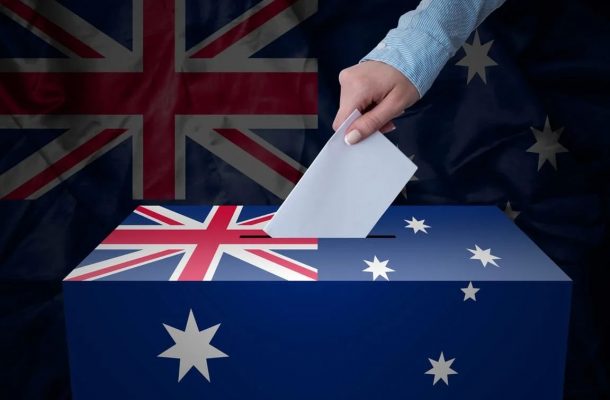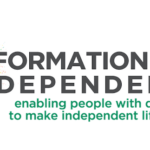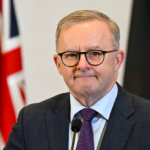The 2019 federal election: the polls, Parliament and parties

Politicians, activists, party volunteers and the broader community will be looking forward to 6pm this Saturday, 18 May. After a lengthy campaign, which really started since Scott Morrison became Prime Minister in September last year, the final day to vote for the federal election is at hand.
With the electoral contest now in its final day, it’s timely to look at the electoral contest, the parties, and the possible election outcomes that the nation will be confronting on Sunday morning.
The contest in the House of Representatives
The federal election campaign has just hours to run, but the final result appears to have been decided some time ago.
The Australian Labor Party has been leading in the influential Newspoll opinion polls since the last election held in July 2016. The two-party preferred measure, which shows the level of support for each major party by taking into consideration preference flows, has moved around over the past three years, but has never shown the Coalition to be in an election-winning position.
At the start of 2017, it showed Labor leading the government 55 per cent to 45 per cent and, following the removal of Malcolm Turnbull as prime minister in August 2018, Labor extended its lead to 56 per cent. Such numbers are incredibly high and suggested the Coalition was on track for a significant defeat.
To put such results into context, the Howard government won in a landslide in 1996 with just 53.6 per cent of the two-party preferred vote, while in 2007 Kevin Rudd led Labor to victory with just 52.7 per cent of the two-party preferred vote.
While opinion polls haven’t been such good predictors in recent UK and US elections, it’s important to note that they are very accurate in Australia. This is primarily due to the fact that we have compulsory voting, which means that the views garnered by opinion polls will be reflected as virtually the entire voting population participates in the election. Furthermore, a review of Newspoll data published just before election day over the past three elections shows that it’s been inaccurate by just tenths of a percentage.

On track for victory?
In recent weeks, the gulf between the parties has narrowed, but Labor maintains its lead with 51 per cent to the Coalition on 49 per cent. That should be enough for Bill Shorten to comfortably claim victory on Saturday night.
While the Greens had a disastrous Victorian election in November 2018, the party has been more upbeat leading into the federal poll. It’s targeted Liberal Party seats in Victoria this year, with the view to winning Kooyong and Higgins.
Opinion polls, however, haven’t really indicated the party has made significant ground in the lower house contest, as its national primary vote has remained where it was in 2016, at about 9 per cent.
The Senate contest
While minor parties struggle to win seats in the House of Representatives, they have been able to win representation in the Senate. This is primarily due to the electoral system. Rather than having to win 50 per cent plus 1 of the vote to gain a lower house seat, candidates for the upper house need to win just 14.3 per cent of the statewide vote. This reduces the electoral barriers confronting minor parties, especially if they organise preference deals with other parties to help their chances of election. At every general election, half of the 12 senators from each state are up for election.
Since the demise of the Democrats in the early 2000s, the Australian Greens have become the most prominent minor party in the chamber. This year, six of the nine Greens senators in Parliament are facing election. The party will come under significant pressure to win all six seats.
In a boost for the Greens, the Labor Party will be directing its preferences to the party in all states except Victoria. This should give the Greens a good chance of maintaining its representation in the Senate.
The government elected on 18 May will have to negotiate the passage of laws with what is expected to be a still sizeable cross bench in the Senate.
In Victoria, Labor has decided to preference Derryn Hinch, a high-profile senator who’s campaigned on law and order issues. This preference deal should allow Hinch to remain a prominent member of the next Parliament.
The Liberal Party has decided to send its preferences to the United Australia Party (UAP) in all states. This should help the nascent Clive Palmer-led party to win a seat in Queensland and possibly New South Wales. By doing so, it’s expected that One Nation would miss out on consolidating its Senate representation. Pauline Hanson, however, will still be in Parliament, as her term expires in three years.
Other winners?
There might be some others also winning Senate seats.
It’s yet to become clear whether the Centre Alliance Party (formerly Nick Xenophon Team) will be able to grow its parliamentary representation by winning a seat in South Australia. In Tasmania, Jacqui Lambie might make a return following her initial parliamentary career being cut short thanks to section 44 of the Constitution.
In any case, the government elected on 18 May will have to negotiate the passage of laws with what is expected to be a still sizeable cross bench in the Senate.
What is less certain, however, is whether Australian politics will continue to be beset by the infighting that has been apparent in the major parties for the past 10 years. If the parties haven’t learnt from their past mistakes, then voters will stand ready to pass judgment on their performance again in 2023.
This article was published by Lens.
Zareh Ghazarian is a Senior lecturer in the School of Social Sciences at Monash University. His teaching and research interests include elections, institutions of governance, political leadership and comparative politics.













